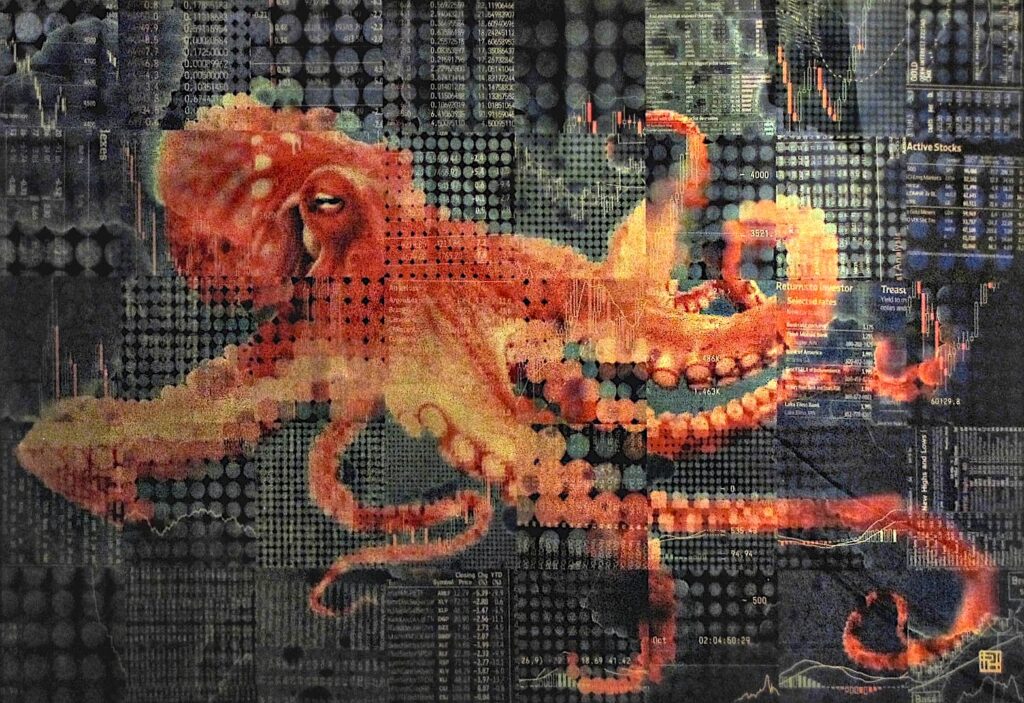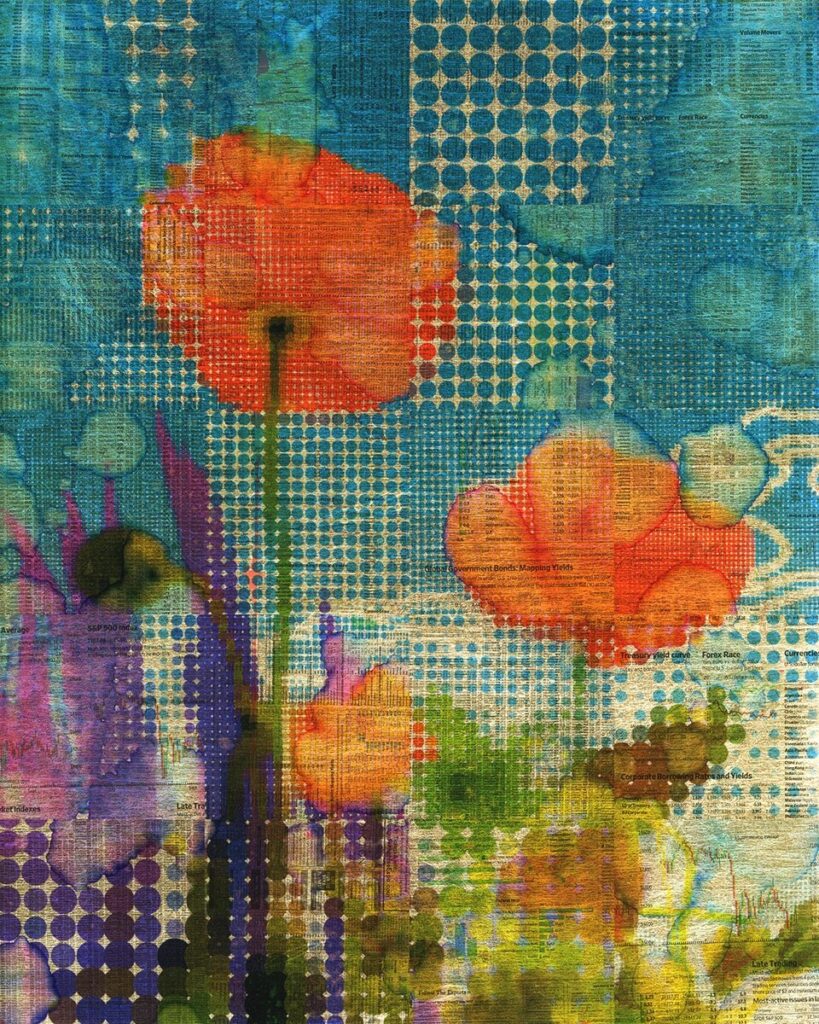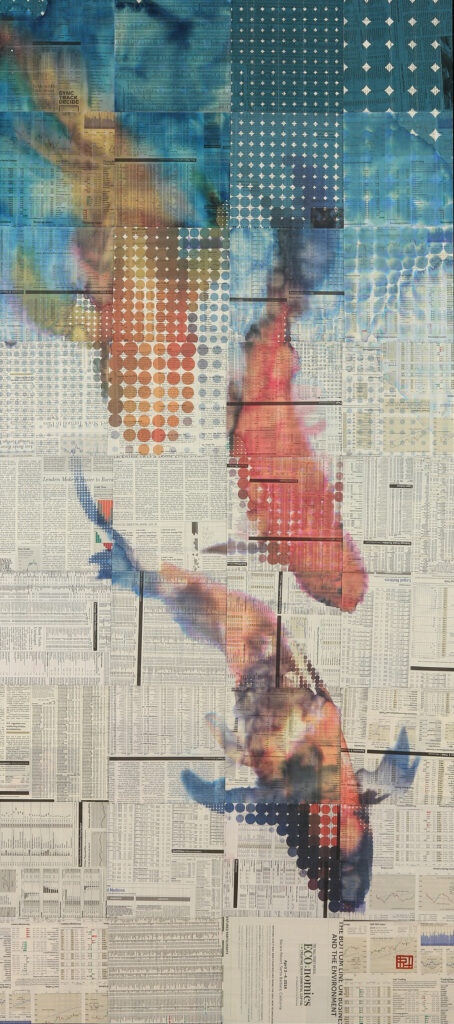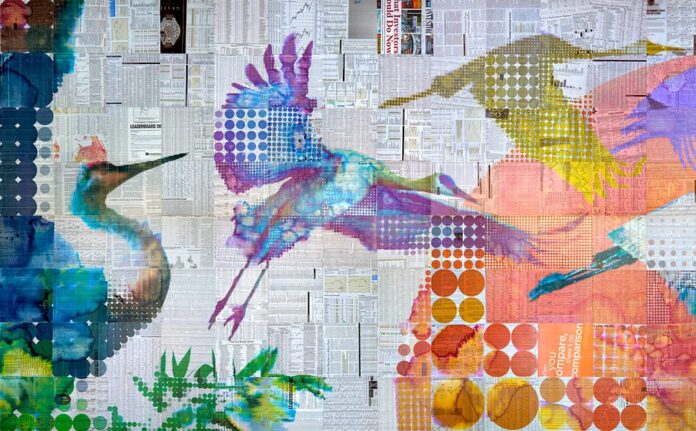The digital world has been altering our lives for generations now, through photo editing, the internet, virtual reality and gaming, and now artificial intelligence which—according to some sci-fi dystopian visions—threatens not only our jobs of many but even human existence. It’s safe to say that there will be no retreat to analogue art and consciousness any time soon, so how do we use the superpowers provided by digital technology without losing our humanity or connection to the natural world?
San Francisco artist Phillip Hua suggests that a sensible, thoughtful middle course is possible in You Can Never Go Home Again, a solo exhibition at the Triton Museum of Art in Santa Clara (runs through January 12). The title is similar to that of Thomas Wolfe’s classic fictional memoir, published in 1940 but set in the 1920s and ’30s, which contrasts economic unrest and political strife with its main character’s nostalgia for youth. The show’s name seems timely, given that collectively, we’re not only not going back; we can’t. This idea that change is inevitable was propounded in the fifth century BCE by the ancient Greek philosopher Heraclitus, who held that “no man ever steps into the same river twice.” The river has changed, and the man—and art— too.

Hua, who is of Vietnamese descent, grew up in rural San Jose surrounded by fields and orchards and lulled to sleep by the whirring of crickets that have long been silenced by the growth of redevelopment driven by the tech industry. He had such a love of insects—beautiful little sculptural creatures—that he considered becoming a mailman when grew up so that he could collect them, or possibly an entomologist. Instead, he was to be an artist, and located what would be one of his career’s central themes during a 2007 trip to Beijing.
On that journey, he saw how China’s economic boom stood in stark contrast with its concomitant environmental degradation. Following a series of works of single trees painted or printed on newspaper pages—portraits, in a sense, of endangered species or individuals—Hua found a hybrid, mixed-media approach that suited his desire to fix or preserve glowing, transient nature in art, akin to the jewel-like bugs he pinned down as a boy. His works allow for the viewer’s sociopolitical interpretation. In them, eternal or immortal creatures are contrasted with the news of the day, i.e., reality is reduced to orthographic symbols.
Hua combines, in his sumptuously colored and patterned mixed-media collages, multiple prints of the same motif, digitally printed on rice paper with backgrounds enlivened by spontaneously painted gestures and textures on wooden panels subdivided into grids, suggesting geography and mapping. By using the grid as a substructure, Hua is able to choose painted backgrounds that align but do not quite match, asserting the collaging of disparate but related elements when we view them close-up, but coalescing into a unified field when seen at a distance.

Viewers may think of digital screens being refreshed bit by bit, or of partial artworks restored by art experts, with the conjectural elements painted in gray to distinguish them from the original artifacts. The overlapping elements suggest time’s passage, and perhaps the subjective nature of reality. Hua’s grids of circles suggest photography (the bokeh orbs of fast lenses) and commercial printing (Ben-Day dots à la Roy Lichtenstein.)
The artist’s digital inkjet monotypes showcase plants and animals, similar to the Chinese brush paintings that he grew up with, and share a similar respect for nature, but Hua’s are decidedly contemporary rather than antiquarian. The backgrounds of gold leaf (an illusion of real gold, the artist notes) echo depictions of heaven in medieval mosaics and paintings, only the collaged elements are wrapped, as if held together and protected, in transparent packaging tape, an industrial material.
Contrasting with the opulent and even sacred beauty of these nature icons are Hua’s ironic titles, whose alliteration invokes the interplay of culture and nature. “Loss Lullaby” is a huge depiction of a white cricket against a starry nighttime sky. “Bloom Boom” features floral blossoms set against fields of colored dots lined up in rank and file. “Proven Performance” swims with golden koi through a sea of business-page data, and “Selective Speculation” floats an octopus into a dark abyss, arrays of circles rhyming with circular suckers on its tentacles. What Hua characterizes as “our blended digital and corporeal lives“ intersect and interact in these sensuous and elegiac artworks, preserving the floating life that was and is.

YOU CAN NEVER GO HOME AGAIN runs through January 12. Triton Museum of Art, Santa Clara. Tickets and more info here.





